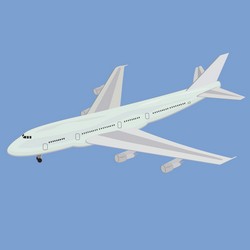Laser beam welding of lightweight alloys
Al-Li alloys are an attractive proposition for the aerospace industry as the very low density of Li could enable improvements in aircraft performance through reduced structural weight. However, the first- and second-generation materials had issues with ductility, toughness, as well as fracture and corrosion resistance. Third-generation Al-Li alloys promise to make a major contribution to lighter aircraft. The EC supported the members of the LAWENDEL (Laser welding of newly developed Al-Li alloy) project in their quest to develop an appropriate laser welding process for the newly developed Al-Li alloys with reduced Li content and other modifications. A unique combination of experimental and theoretical modelling work significantly reduced both time and cost required for optimisation when compared to conventional trial-and-error. Researchers demonstrated the new laser welding technology in three stiffened flat panels made out of third-generation Al-Li alloys. Specifically, the demonstrator was made of commercially available alloys AA2198 for the skin and AA2196 for four equally spaced stringers. The researchers investigated the laser weldability of the new alloys and compared their microstructure characteristics and mechanical properties with the conventional Al-Li alloys. Research began with AA2198 and a feasibility study of laser beam welding. They also prepared riveted specimens made of AA2024 that underwent micromechanical and microstructural testing for comparison with the welded samples. They examined the microstructure of the welds using optical and scanning electron microscopy. The local chemical composition was analysed by energy dispersive X-ray spectroscopy while electron back-scattering diffraction analysis was used to characterise texture and grain size. Experimental data helped validate the calibrated models and determine the optimal process parameters for superior weld performance. In particular, temperature field data facilitated the development of a hot cracking susceptibility model addressing one of the most critical issues with Al-Li alloys. LAWENDEL combined the best of two worlds, namely the use of very lightweight Al-Li alloys and their superior joining by low- to no-emission laser welding. The end result should be a broad range of possible applications for laser beam welding and its wider acceptance in aerospace industry.







